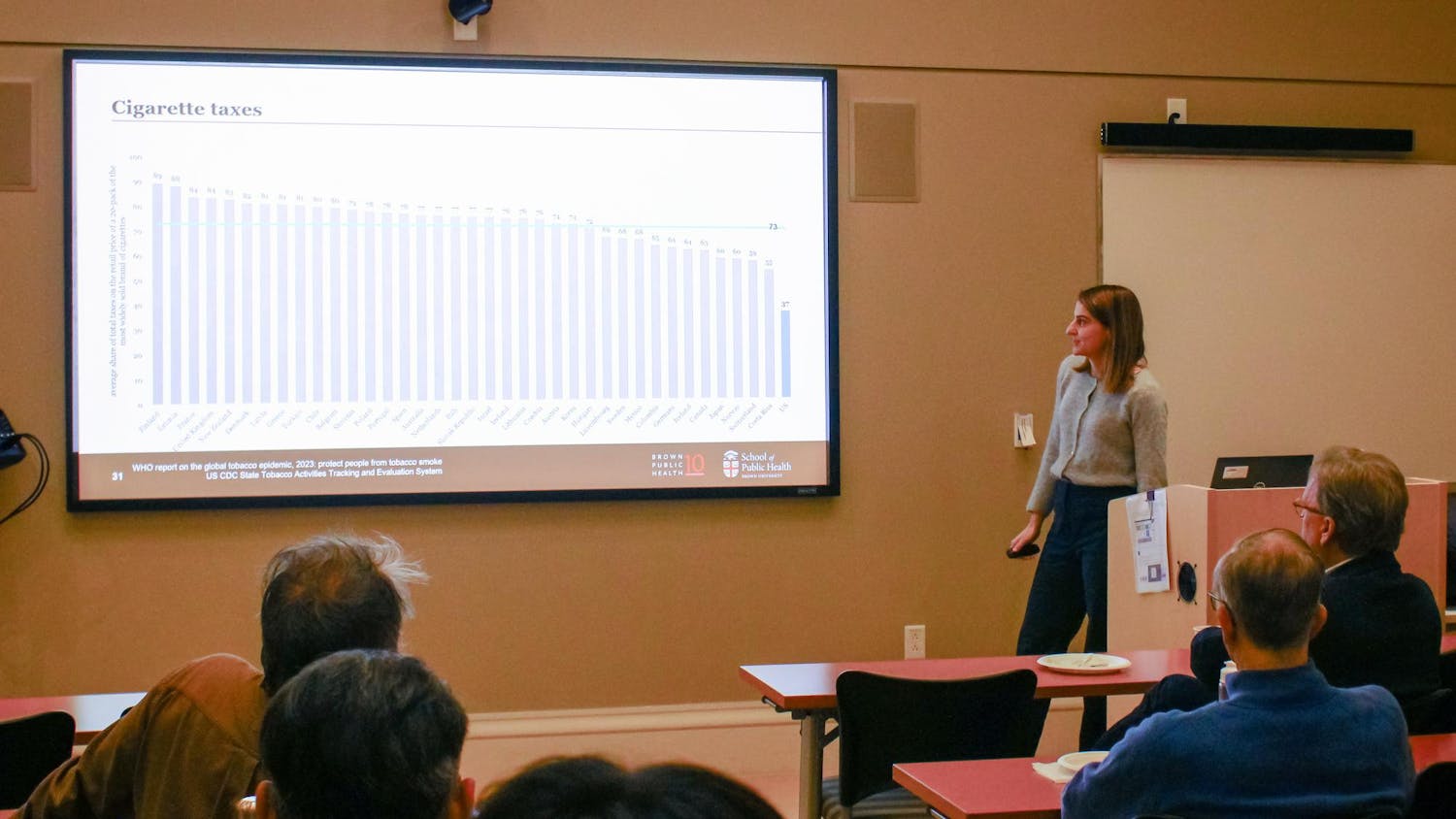For Brown students in Providence this semester, semi-weekly testing has become the norm: Scheduled online twice a week, booking and receiving a COVID-19 test has become as commonplace as checking a dining hall’s menus before picking up dinner.
Before the semester began and these testing procedures on campus were implemented, student researchers from Professor of Engineering and Medical Sciences Anubhav Tripathi’s lab gathered data on 66 University students’ experiences and perspectives surrounding COVID-19 testing through an online survey. Developed by Johnny Boustany ’22 and Nathalie Westres ’22, the survey identified students' preferences for the frequency of testing, types of tests — saliva-based or nasal-based — and the testing process.
When asked about on-campus testing procedures, students were evenly split between those who preferred taking a diagnostic test every two to three days and those who preferred a weekly test, according to the survey results. Around 34 percent of students preferred taking an additional antibody test on a monthly basis. Heightened stress or fear before the semester began could have influenced students to choose more frequent testing, Boustany said, and opinions may have changed after undergoing on-campus testing.
A third of respondents preferred saliva-based tests over nasal swab-based tests, with the most selected reason being that saliva-based is less invasive. Of the smaller number of respondents who preferred nasal-based tests, half cited the lack of sufficient research on saliva-based tests. Other respondents said they were unsure which option they preferred.
Research on nasal-based tests has been around much longer than studies surrounding saliva-based tests, which were not approved for emergency use by the Food and Drug Administration until April, Westres noted. But in their research in preparation for the survey, the student researchers found that saliva-based tests “had a lot of potential and produced reliable results in the same way nasal-based tests did.”
The researchers found that students were mostly comfortable with the possibility of self-administering tests on campus, with 70 percent of respondents “extremely comfortable” self-administering a saliva-based test. In comparison, 30 percent reported the same comfort level for nasal-based tests.
The University’s COVID-19 policy for the fall semester requires weekly or semiweekly anterior nasal-based tests for asymptomatic on-campus students, faculty and staff, which are less invasive than nasopharyngeal swab tests used for people experiencing symptoms, The Herald previously reported.
Though the University is keeping an eye on new research developments in COVID-19 testing, changing the current University testing procedures is not “imminent by any stretch,” Russell Carey ’91, executive vice president for planning and policy, said in an interview with The Herald Oct. 29.
Any new testing procedure would need to surpass the current method in factors such as accuracy, low cost or ease in administration of the test, Carey said.
Only a small portion of the undergraduate population responded to the survey. But for surveys where the objective is to document student experiences, the representativeness of the sample size is less of a concern than making sure the data relays the existence of a problem, said Georgetown University research fellow Benjamin Daniels, who has conducted survey-based research. “Every data point is new and important. If one person says that is a problem we’re having, that’s information that we didn’t have before,” he said.
Boustany and Westres originally planned to work on developing a saliva-based diagnostic technique in the Tripathi lab. But due to the pandemic, the student researchers, who are studying remotely, pivoted to virtual projects, including this survey. Asking his students to conduct survey-based research was “more (educational) in a way than doing a lab experiment. … To their scientific leadership, it adds a lot,” Tripathi said.
While survey-based studies can be costly and time-consuming to administer, they allow researchers to target and reach underrepresented populations, said Benjamin Daniels, a research fellow at the gui2de group at Georgetown University. This is in contrast to administrative data collections such as Census data which “often excludes groups like ethnic, racial, and gender minorities, migrants and refugees and other vulnerable populations, whether intentionally or not,” he wrote in an email to The Herald.
Daniels is part of a gui2de research team that conducted a worldwide survey questionnaire this March to collect student experiences on how COVID-19 has taken a toll on various aspects of their lives. The team hopes that their findings could help inform university administrators’ decision-making, he said.
Their survey received 516 responses from 28 countries, offering insight into students’ health and access to resources. For example, close to 80 percent of respondents said that their psychological wellbeing and ability to pursue academic goals was either “worse” or “much worse” than before the pandemic, according to an article published in the American Ethnologist journal.
The aim of the Tripathi lab’s survey was “to contribute to the Brown community,” Boustany said, and “shed a light on everything and make things a bit more clear about how students feel with regard to these different types of tests.”
“We want to be a voice for students,” Westres said.





